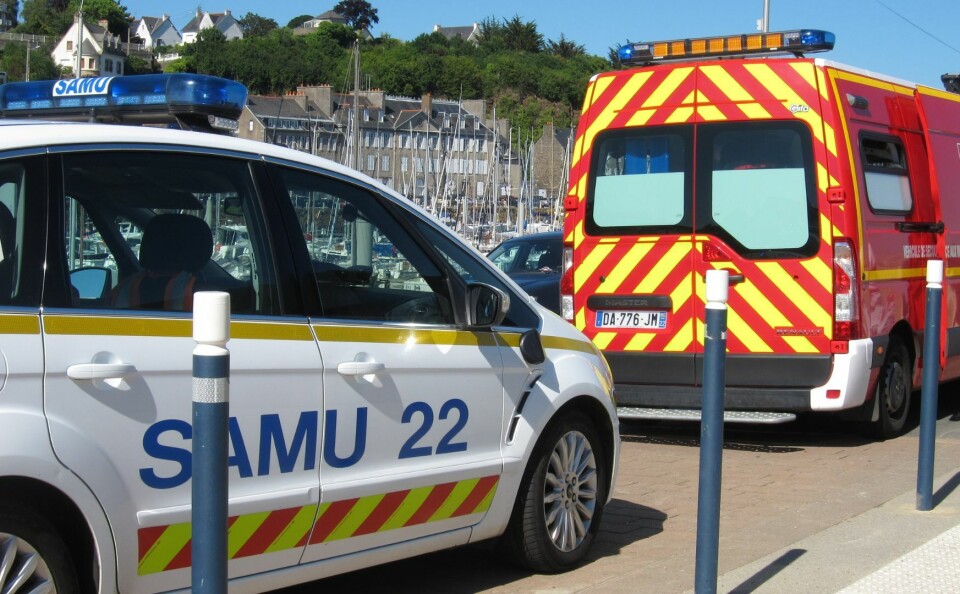-
"Farmer protests to continue despite France opposing Mercosur trade deal"
French opposition to free-trade deal is unlikely to swing scales on key vote
-
UK-EU talks raise hopes of easing post-Brexit rules for Britons in France
Several proposals and plans could ease some post-Brexit complications
-
French study claims ‘Dry January’ participation improves sleep and health
First major study of its kind in France praises challenge, but alcohol-free month is yet to receive official endorsement
French medics take heart machine out of hospitals and onto the streets
Attaching cardiac arrest victims to heart surgery kit at the scene improves chances of survival – but it is not easy to do

Doctors have perfected a procedure to put cardiac arrest victims on to heart and lung machines on the scene, rather than waiting for them to be admitted to hospital.
Teams attached to the emergency medical service SAMU in Paris have been trialling the practice since 2011 in instances where first responders, giving cardiac massage, have not been able to restart hearts using other methods, such as defibrillators and insulin injections.
Chances of survival are improved but still only 30% to 40%
Attaching victims to a machine, called an ECMO (Extracorporeal Membrane Oxygenation), before they are moved to hospital gives a better chance of survival because of the difficulties of performing cardiac massage in a moving ambulance.
Professor Lionel Lamhaut, one of the team that developed the technique, said: “There have been many studies which show survival rates are better using this method.
“Even so, chances of survival are only around 30% to 40% after major cardiac arrest when we do the machine procedure.”
Read more: Two mobile apps could help save heart attack victims in France
Oxygenates blood outside the body
The machines are direct descendants of those used to pioneer open-heart operations in the 1960s.
They work by bypassing the heart and lungs and pumping blood outside of the body, to remove carbon dioxide, and sending oxygen-filled blood back to tissues.
The first machines were the size of a person and had to be wheeled about on trolleys, but the modern ones can be carried with one hand.
“They are essentially the same machines that some hospitals that specialise in heart surgery have,” said Prof Lamhaut.
“When we first started developing the procedure 12 years ago, they were a bit bigger, but not by much.”
Try to recreate operating theatre
When arriving on site, medics must first confirm that the victim is receiving heart massage and that it was started within a minute of cardiac arrest.
The team then prepares to hook up the patient to the machine by putting sterile drapes underneath the person. The medics wear operating theatre gowns and gloves too.
“It is important that the area is as clean as possible but we have to accept that it will not be a sterile environment, like in an operating theatre,” said Prof Lamhaut.
With cardiac massage stopped, it is then a race against time to open up both an artery and a vein in the patient’s leg to attach the ECMO machine.
When the machine is switched on, the team usually knows within seconds if the blood is circulating as it is supposed to.
When they are satisfied that it is, the patient, still attached to the machine, is driven to the nearest hospital equipped for heart surgery and usually taken straight to the operating theatre.
Still give heart massage before medics arrive
The techniques for using ECMO machines in the field were developed in collaboration with US researchers.
The procedure is now used not only in Paris but also in some US cities, Spain, the Netherlands, Germany and in London.
In France, it is being deployed to Lille, Lyon and Perpignan, and there are plans to use it in other cities too.
Prof Lamhaut stressed the importance of having people on the scene react quickly to start heart massage as soon as a cardiac arrest victim stops breathing and loses a pulse.
Read more: French woman declared dead after 40-minutes of heart massage wakes up
“After one minute without a pulse and no cardiac massage, the risk of brain damage is great, and after three minutes it is almost certain,” he said.
“People need to react before the pompiers arrive.
“There is nothing we can do when people in cardiac arrest have not had cardiac massage in time.”
The technique has been used for drowning victims too, although they have usually been in the water too long for it to be useful.
For cases of people suffering from severe hypothermia, however, it has been successful.
Related articles
French firm pioneers stem cell treatment for heart attack victims
Heart disease patients in France prescribed free sports classes
Defibrillator alarm system wins top invention prize in France
























